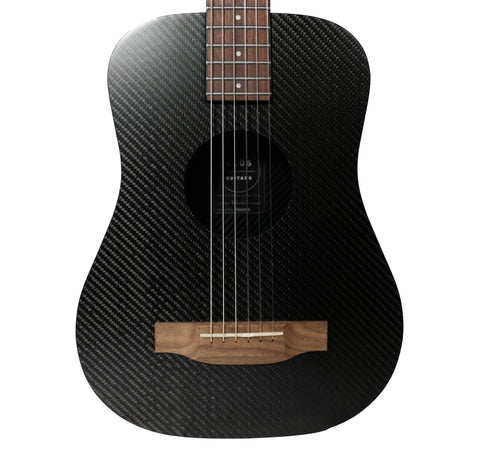The KLOS Nylon build is NOT a classical guitar. So what is it?

Our KLOS nylon guitars are a popular Custom Shop choice for players who love the feel and sound of nylon strings and want the form factor of a traditional steel string acoustic guitar. The Nylon build is available on any of our acoustic guitars. To figure out if a KLOS Nylon build is right for you, it’s important to know the differences and similarities between our steel string and nylon designs.
Similarities between our steel string and nylon guitars
The nylon string guitar has the same nut and string spacing as our steel string guitar. They both incorporate a 1 11/16" standard Gibson spec nut with 35mm between high E and low E at the nut. The nylon build also features the same radiused fretboard as our steel string guitar.
This means that our nylons have some differences from true classical guitars. If you are a classical guitar player and you are wondering if the KLOS nylon is for you, please read on and be aware of these specification differences when making your decision.
Differences between steel string and nylon guitars
1. The nylon strings require less internal bracing
We try to use the smallest amount of bracing possible on our nylon string builds to give our guitars the best resonance and volume we can.
2. The saddle angle changes based on vibrational mechanics
For nylon strings, the saddle typically goes straight across; on a steel string, the saddle is angled. This is referred to as “compensation”. Compensation is required because the material in each steel string vibrates differently and changing the length of the vibrating string is essential to ensure intonation*.
3. The bridge design is different to accommodate differing string characteristics
In the photos below, you'll notice that the steel-string guitars use a bridge-pin retention system that is ubiquitous in steel-string guitars, while the nylon uses a string-through design that works better for the more flexible ends of nylon strings.

Nylon string bridge

Compensated steel string bridge
These differences together mean that if you get a nylon, you wouldn’t want to put steel strings on it and vice versa. The guitar would not sound right, and the additional tension might even damage your soundboard! Note: KLŌS Nylon guitars feature a black walnut bridge, rather than the bridge featured in this image.
Differences between nylon build and a classical guitar
Many classical guitar necks share some common characteristics that are not present in our current Nylon build. The neck on a classical guitar is flatter and wider to accommodate the intricate finger-picking that is common in this style of play. It’s possible to play our nylon guitars as classical guitars, but they may be less familiar to players that are accustomed to a specific type of neck. We’re working on designing a neck that will open our instruments up to classical guitarists and give them access to some of the best sounding, most durable, and most playable carbon fiber guitars on the planet.
Please fill out the interest form here (https://klosguitars.com/pages/interest) to be notified when we begin offering a true classical design!
Final thoughts
Our nylon build is an awesome custom shop option for players who like the soft feel and easy fretting of nylon strings. It’s also great for people who are looking for the unique, poppy sound that nylon strings provide. We make all of our nylon builds to order, so please allow up to two weeks for our luthiers to assemble your guitar for you.
If you ever have any questions about our instruments or options, you can speak directly to our production manager in Provo by calling 929 900-5567
* Intonation refers to the accuracy of pitch as you fret notes on the instrument. If your guitar had poor intonation, the strings may sound like they’re in tune when played open but wouldn’t produce the right notes as you played up the neck. By compensating the saddle on the steel string build, we accommodate the different thickness and tension of different strings to produce the right intonation.





